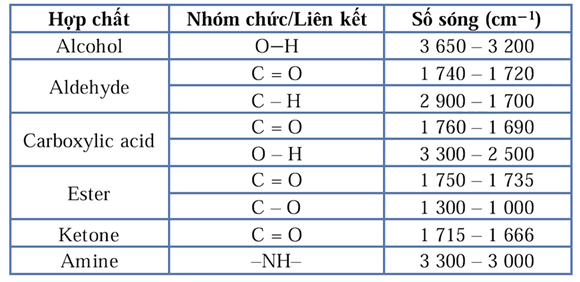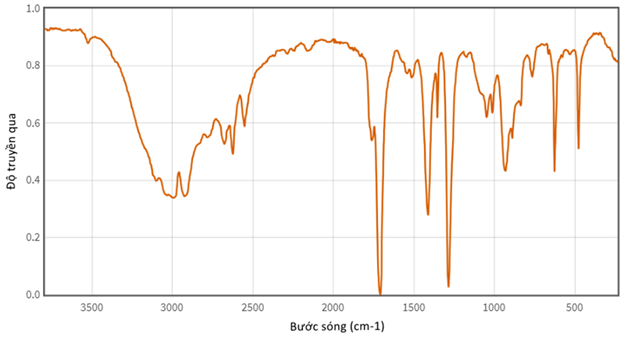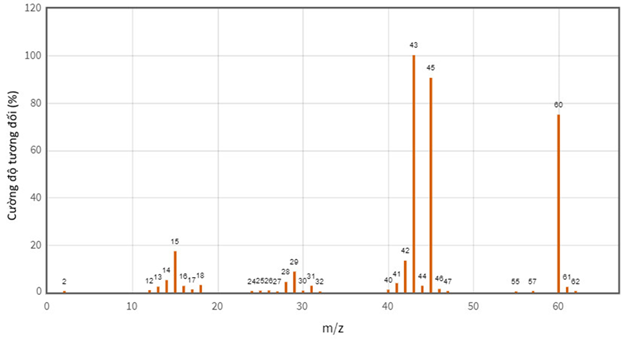Nhóm nghề nghiệp nào liên quan đến thành phần tự nhiên?
dân số học, đô thị học.
khí hậu học, địa chất.
môi trường, tài nguyên.
nông nghiệp, du lịch.
Hãy suy nghĩ và trả lời câu hỏi trước khi xem đáp án
Đáp án B
Nhóm nghề nghiệp liên quan đến thành phần tự nhiên (khí hậu học, thổ nhưỡng học, địa chất, trồng trọt, chăn nuôi, thiết kế quy hoạch các công trình nông nghiệp, quản lý đất đai và bảo vệ môi trường,...).
Đề thi HK1 môn Địa lí 10 Cánh diều năm 2023-2024 là công cụ quan trọng giúp giáo viên đánh giá mức độ tiếp thu của học sinh qua các dạng bài tập từ cơ bản đến nâng cao, từ đó điều chỉnh phương pháp học tập cho học sinh hiệu quả hơn.
Câu hỏi liên quan
Trong biểu thức logic, phép toán nào chỉ đúng khi hai mệnh đề có giá trị khác nhau?
Hệ quả nào không phải là của khu vực hóa kinh tế?
Các chất mà vi sinh vật có thể tiết ra trong quá trình sinh trưởng có tác dụng ức chế sự phát triển hoặc tiêu diệt vi khuẩn được gọi là
Chọn đáp án đúng. Cho \(a > 0,a \ne 1,b > 0\). Với mọi số nguyên dương \(n \ge 2\) ta có?
Môn Địa lí được học ở cấp độ nào?
Choose the correct answer.
My dad _____ meat at all - he's a vegetarian.
HeidiSQL hỗ trợ kiểm soát việc cập nhật dữ liệu của trường khoá ngoài bằng cách?
Cho tập hợp E = {x ∈ ℕ | x là ước chung của 20 và 40}.
Tập hợp E có bao nhiêu phần tử?
Hệ miễn dịch của cơ thể chỉ tấn công tiêu diệt các tế bào lạ mà không tấn công các tế bào của cơ thể mình. Để nhận biết nhau các tế bào trong cơ thể dựa vào?
Cho các mệnh đề sau:
(1) ∀x ∈ ℝ, |x| > 1 ⇒ x > 1.
(2) ∃x ∈ ℤ, 2x2 – 8 = 0.
(3) ∀x ∈ ℕ, 2x + 1 là số nguyên tố.
Trong các mệnh đề trên, có bao nhiêu mệnh đề đúng?
Cho bảng tín hiệu của các nhóm chức trong hợp chất hữu cơ như sau:

Người ta xác định công thức phân tử của hợp chất hữu cơ X này thông qua các bước sau:
- Thu thập kết quả phổ IR của hợp chất X:
 - Thu thập kết quả của phép đo khối lượng của hợp chất X thông qua kết quả phép đo phổ khối lượng (MS):
- Thu thập kết quả của phép đo khối lượng của hợp chất X thông qua kết quả phép đo phổ khối lượng (MS): Đốt chất hợp chất hữu cơ X thấy thành phần phần trăm các nguyên tố về khối lượng: \(\% \mathrm{mC}=40 \%\); \(\% \mathrm{mH}=6,67 \%\), còn lại là của nguyên tố oxygen.
Đốt chất hợp chất hữu cơ X thấy thành phần phần trăm các nguyên tố về khối lượng: \(\% \mathrm{mC}=40 \%\); \(\% \mathrm{mH}=6,67 \%\), còn lại là của nguyên tố oxygen.Nhận định nào dưới đây về hợp chất hữu cơ X là sai?
Các chủ thể tiêu dùng cần phải có trách nhiệm gì khi tham gia vào những hoạt động kinh tế?
Read the following passage and mark the letter A, B, C, or D on your answer sheet to indicate the correct answer to each of the questions.
When parents name their children, they often take into consideration their own preferences, family traditions, or beliefs. In many European cultures, parents typically select names based on family connections, often honoring grandparents or ancestors. For instance, in Italy, children are commonly named after their grandparents, starting with the father's parents and then the mother's. Similarly, in Eastern Europe, children may be named after their deceased relatives to protect them from harm.
In some Asian countries, the naming process may involve the child's grandfather or a fortune-teller, who chooses a name believed to shape the child's character. Names might be inspired by elements like fire, water, earth, wood, or metal, or they may convey qualities such as beauty, strength, or kindness.
African cultures also have unique naming traditions, such as in Ghana's Akan culture, where a child's name is determined by the day of their birth. Each day has specific names for boys and girls, reflecting characteristics associated with that day. For example, a boy born on Friday might be named Kofi, symbolizing a "wanderer" or "explorer" while a girl born on the same day could be named Afua, also representing a traveler.
No matter where a name originates, it holds significant meaning and reflects the child's cultural heritage. Whether chosen out of preference or dictated by tradition, a child's name is a cherished and respected gift.
According to the reading passage, which would probably NOT be found in the meaning of children's name across the world?
Nội dung nào sau đây không phản ánh đúng vai trò của du lịch đối với việc bảo tồn di tích lịch sử và di sản văn hóa?
Để tạo một cảnh video mới, người dùng cần thực hiện thao tác nào?
Read the following passage about home schooling in the UK and mark the letter A, B, C or D on your answer sheet to indicate the best answer to each of the following questions from 23 to 30.
Full-time education in the UK is compulsory from the age of five to sixteen, but this doesn’t have to be in a school. Around 50,000 children are educated at home. This is called ‘homeschooling’.
Parents take their children out of school for different reasons, like illness and the need for special care, or because the distance to the nearest school may be too far. Some children are simply unhappy at school. Whatever the reason, they’re allowed to study at home, although inspectors regularly check how they are getting on.
Hayley and Jenny haven’t been to school for two years but they haven’t neglected their studies. Their mother worked out strict timetables for them, with hourly lessons for each day. She’s responsible for teaching them Maths, English, History and French. Their father teaches them Science and Geography. They study all the other school subjects online. ‘We have lessons with Dad in the evenings and at weekends,’ explains Hayley.
The family’s home is in a remote part of Wales. ‘The girls were fine at school but they spent so much time getting to school, they were too tired to learn, says their mother, Julia”. ‘We had a family conference and in the end we decided to try homeschooling. So far, it’s been a big success, but the girls know that if they want to go back to school at any time, we’ll let them. We follow the normal school program of lessons, and they will take all the normal school exams.’
There are disadvantages too, of course. ‘Social isolation is something I worry about,’ says Julia. They both seem happy and well-adjusted, but they haven’t really got friends who live locally. But in the summer holidays they go away on trips to summer camps, where they have no trouble mixing with people and making friends.’
The word “they” in paragraph 4 refers to ______.
Cho các nguyên tử sau: B (Z = 8, A = 16), D (Z = 9, A = 19), E (Z = 8, A = 18), G (Z = 7, A = 15). Trong các nguyên tử trên, các nguyên tử nào thuộc cùng một nguyên tố hoá học?
Trong cơn giông khi có sấm sét, khí nitrogen (\(N_2\)) và khí oxygen (\(O_2\)) trong không khí có thể phản ứng trực tiếp với nhau tạo thành hợp chất nào?
Đặc điểm nào sau đây không có ở sinh trưởng sơ cấp?
Cho mệnh đề sau:
Cho tứ giác ABCD, ta có các mệnh đề sau:
P: “x là số nguyên dương”.
Q: “x2 là số nguyên dương”.
Mệnh đề nào sau đây đúng?















